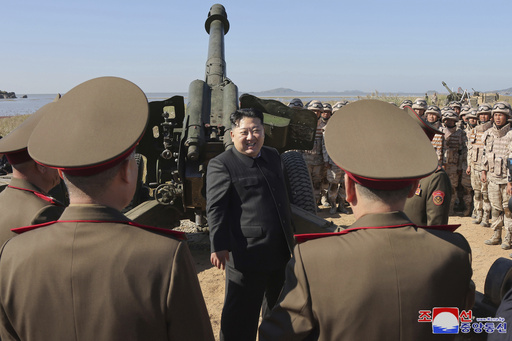
SEOUL, South Korea — Recent reports indicate that North Korea has transferred additional artillery equipment to Russia to aid its military operations in Ukraine. Additionally, there are claims that some of the thousands of North Korean troops stationed in Russia have started to participate in combat activities, as revealed by South Korea’s intelligence agency during a briefing to lawmakers on Wednesday.
This assessment emerged shortly after Russia expressed concerns over U.S. President Joe Biden’s approval of Ukraine’s ability to strike targets within Russia using longer-range missiles supplied by the U.S. This decision has been characterized by Russian officials as exacerbating the ongoing conflict. U.S. officials have noted that Biden’s rationale for this decision was heavily influenced by North Korea’s involvement in the war.
During the closed session, the National Intelligence Service (NIS) disclosed that North Korea had dispatched 170mm self-propelled guns along with 240mm multiple rocket launch systems to Russia. Lawmaker Lee Seong Kweun, who was in attendance, reported that these types of artillery are not currently in the Russian military’s inventory, suggesting that North Korea may have sent personnel to provide training on their operation and maintenance.
Last week, various Russian Telegram channels and social media platforms shared images allegedly depicting North Korea’s “Koksan” 170mm self-propelled guns being transported by rail within Russia. A report from the Financial Times, referencing Ukrainian intelligence, stated that North Korea has dispatched approximately 50 domestically manufactured 170mm self-propelled howitzers and 20 additional 240mm multiple launch rocket systems to Russia in recent weeks.
These artillery systems represent the latest in conventional weaponry that North Korea is thought to be supplying to Russia, with both nations significantly increasing their military collaboration amidst ongoing tensions with the U.S. and its allies. Last month, the NIS reported that North Korea had delivered over 13,000 containers holding artillery, missiles, and other conventional military equipment to Russia since August 2023 to resupply its diminishing arsenals.
In the Wednesday briefing, the NIS noted that around 11,000 North Korean soldiers had been relocated to Russia’s Kursk region by late October. This area witnessed Ukrainian forces reclaiming parts of its territory earlier this year. Following their training in northeastern Russia, these North Korean troops were assigned to Russian marine and airborne divisions, with some reportedly already engaging in combat alongside Russian forces at the frontlines.
The U.S., Ukraine, and other observers share comparable assessments regarding the size of North Korea’s military deployment. They indicate that North Korean soldiers began arriving in Russia in October and that many have since become active in combat operations in the Kursk region. Analysts caution that North Korea’s involvement in the nearly three-year-long conflict poses a risk of further escalating tensions.
Lawmaker Park Sunwon, who was also present during the NIS briefing, corroborated earlier statements, mentioning that the agency was unable to provide insights into any potential casualties among North Korean troops.
In a separate development, Moscow reported that Ukraine had launched six U.S.-made ATACMS missiles at Russia’s Bryansk region, marking Ukraine’s first deployment of this weaponry inside Russian territory. While Ukraine’s General Staff did not confirm the specific use of these missiles, they indicated that military operations successfully targeted an ammunition depot in Bryansk, a region adjacent to Kursk, likely serving Russian forces engaged in the area.
Since the commencement of hostilities, Ukrainian officials have consistently advocated for Western allies to permit the use of advanced weaponry to strike significant targets within Russia.
